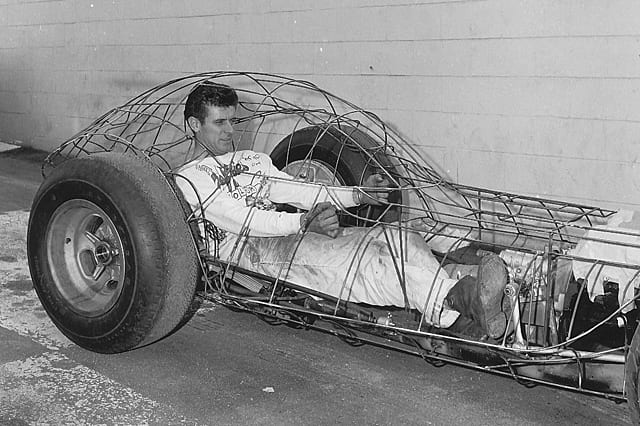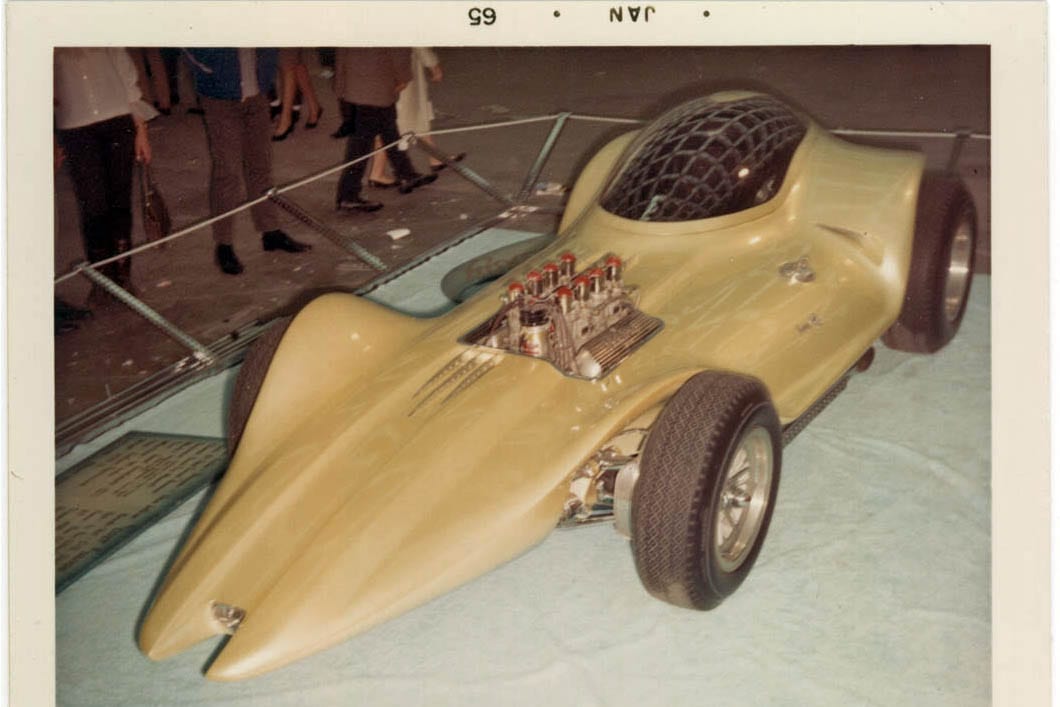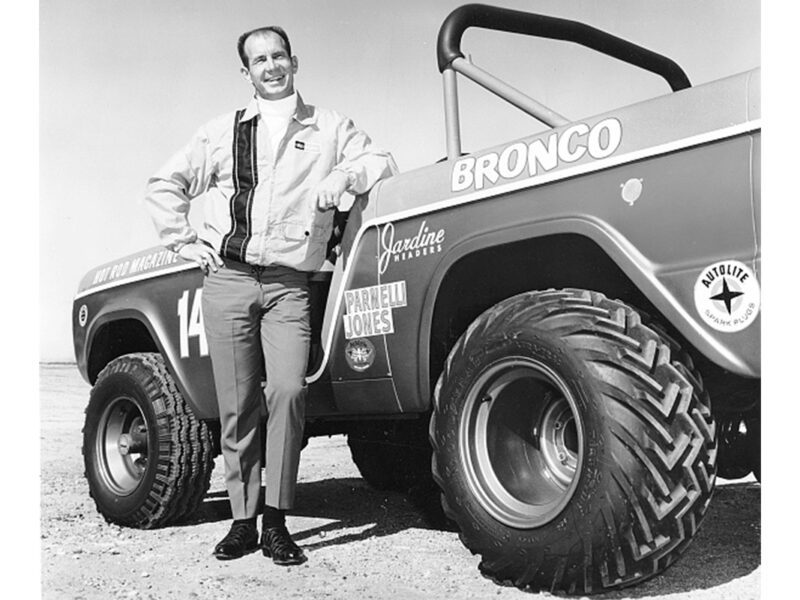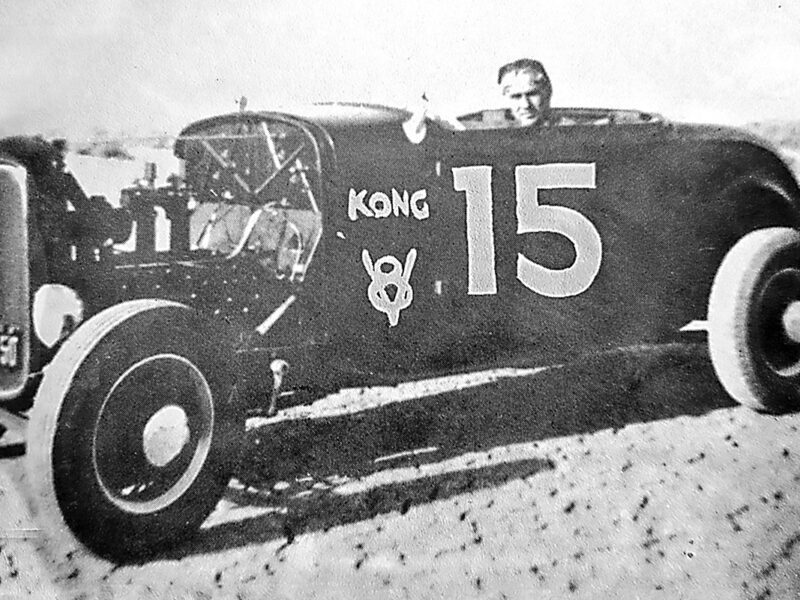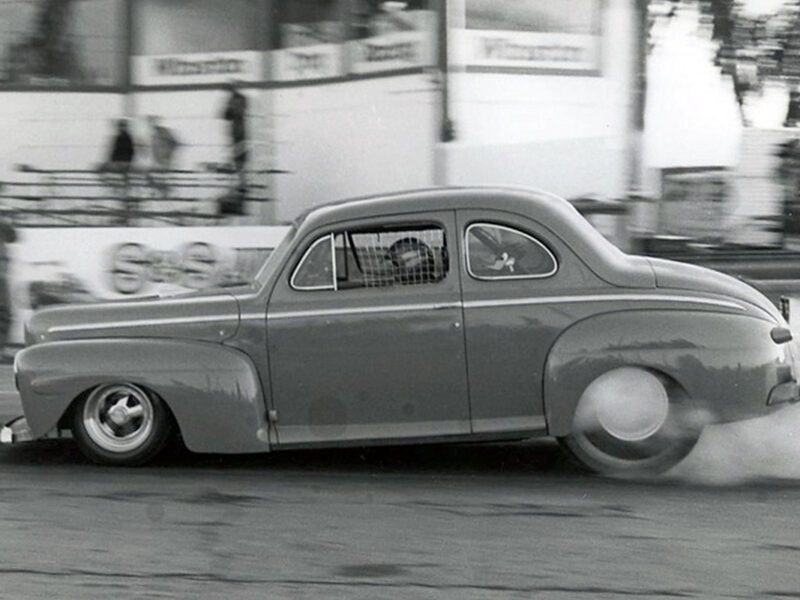Dean Jeffries – From the Manta Ray to The Monkees and Beyond
The cauldron of car-guy creativity that bubbled throughout Southern California post World War II spit out more legendary racers, hot rodders, and customizers than you can shake an acetylene torch at. And this Legends column has had the privilege of showcasing many of them.
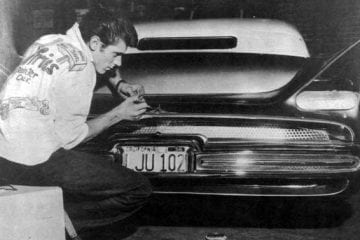
The late Dean Jeffries is seen here pinstriping Bill Carr’s ’55 Chevy “Aztec.” Photo by The Rodder’s Journal
Add customizer and movie-car maestro Dean Jeffries to the list.
Edward Dean Jeffries was born to Viola and James Jeffries in Osage, Iowa, in 1933, the height of the Depression, which may explain why his family fled, Tom Joad-like, to Compton, California. Young Dean took a cue from his mechanic father and developed an early interest in cars. This interest was jump-started during his teen years by the serendipitous location of the Jeffries’ house: around the corner from Barris Kustoms.
Jeffries bailed out of high school at 17 and talked his way into the Army, this during the Korean War. Luckily, Jeffries was sent to Sanhoffen, West Germany, rather than Korea. There he befriended a German man who pinstriped pianos and furniture – and he generously shared his craft with Dean. So began Jeffries’ lifelong relationship with the little brush shaped like a sword.
Upon his stateside return, Jeffries found employment at a local machine shop, where he added machinist skills to his personal toolbox. He worked the night shift, which gave him time to hang out with Sam Barris and Von Dutch, further expanding his repertoire.
Jeffries was confident enough in his ability that he opened his own shop, renting space from George Barris. Eventually he relocated to Hollywood – a move that hinted at a future working with celebrities and building cars for film productions. The shingle above the door read: Jeffries Studio of Style. One of the first customers to roll in was none other than another famous Dean, actor James Dean, who wanted Jeffries to adorn his silver Porsche Speedster with tasteful pinstriping.
In 1963, Jeffries built his most famous custom, the surreal and futuristic Manta Ray. Built atop a Maserati frame, it featured remote-controlled start, a bubble top, a Ford 289 fed through Weber carbs, and a profile right out of an Arthur C. Clarke novel. The swoopy body sported a lone headlight tucked into the nose, fenderless tires, and dramatic side pipes. Stunning would be an understatement. The Manta Ray debuted at the Oakland Roadster Show in 1964 to universal acclaim.
It was during this period that Jeffries also began providing painting services during the month of May at the Indianapolis Motor Speedway. (His neighbor was Indy driver Troy Ruttman.) He would set up shop in Gasoline Alley and apply custom paint schemes and striping; one prominent customer being A.J. Foyt. At his peak, Jeffries’ brushwork touched 21 of the 33 starters.
With his fame growing and his shop’s Hollywood location, it wasn’t long before Tinseltown came calling. One of his first movie cars was the “Monkeemobile,” a crazy ride for the “The Monkees” television series. Built over a 1966 Pontiac GTO, it featured a shark-like pointed grille, a GMC blower bursting out of the hood, and a 1920s-era phaeton top. He even built a trailer that thematically matched the car. It was such a hit, AMC immediately introduced a model kit version.
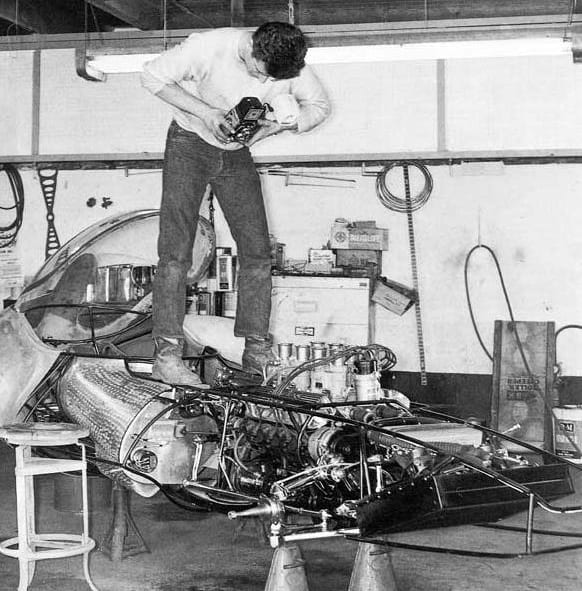
Jeffries is seen perched atop his famous Mantaray, documenting its intricate build. Photo from The Rodder’s Journal
As Jeffries’ Hollywood involvement progressed, he not only built the cars, he also drove them. That’s right, add stunt driver to Dean’s resume. The Internet Movie Database (IMDb) credits Dean with stunts and/or vehicles in 40 different films. He is best known for his work on “The Blues Brothers,” “The Fugitive,” and “Romancing the Stone.”
With his traditional rod and custom background and voluminous film career, Jeffries was well regarded by the motoring press. His customs were featured regularly in buff books; his reputation as a multi-dimensional car crafter was well deserved. In 1964 he was inducted into the Grand National Roadster Show Hall of Fame.
Dean Jeffries passed away in 2013 at the age of 80. In its tribute to him, The Rodder’s Journal quoted several hot rod luminaries who knew him. Historian and NHRA Museum curator Greg Sharp wrote, “A few years back I gave a speech about him at the Roadster Show Hall of Fame luncheon and he stood up and said in his usual self-deprecating manner, ‘I’m just a pinstriper who got bored.’ Even nearing 80, if you told him about something he approved of, he’d simply say, ‘That’s quite bitchin’!’”
Former Hot Rod and Rod & Custom editor Pat Ganahl also came to know Jeffries well. “I drove by Dean’s shop in the Cahuenga pass, with the big billboard on top, nearly every day for 13 years going to Petersen’s. He was always in there working on something amazing. Man, that guy was cool.”
Indeed, Pat, indeed.


